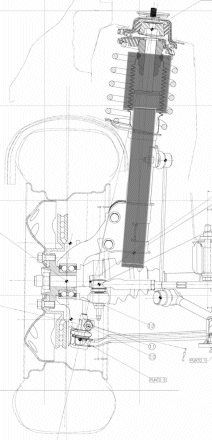-
 News
News -
 People
People -
 Facilities
Facilities -
 Research
Research -
 Active and regenerative shock absorbers
Active and regenerative shock absorbers -
 Active magnetic bearings
Active magnetic bearings -
 AI-based battery modeling and monitoring
AI-based battery modeling and monitoring -
 Autonomous driving and AI for automotive
Autonomous driving and AI for automotive -
 Electric and hybrid powertrains
Electric and hybrid powertrains -
 Electrodynamic bearings
Electrodynamic bearings -
 Mechatronic systems for mountain safety
Mechatronic systems for mountain safety -
 Rotordynamics
Rotordynamics -
 Vehicle dynamics and vehicle architectures
Vehicle dynamics and vehicle architectures -
 Vibration and motion control
Vibration and motion control
-
-
 Collaborations
Collaborations -
 Student Teams
Student Teams -
 Publications
Publications -
 Contact
Contact
Active and regenerative shock absorbers
Electromagnetic actuators have already been proposed as passive or semi-active shock absorbers or as purely active devices in vehicle suspensions. Such actuators are promising for the flexibility of the configuration. The operation mode can in fact range from fully active to fully passive behavior including the regenerative mode in which part of the mechanical energy, that would be otherwise dissipated, is converted in electrical energy. It can then be exploited to drive the device in active mode. Even in passive configuration, electromechanical shock - absorbers allow to easily adapt the damping force using a simple control system. The operating conditions do not affect the performances and the tuning of the design parameters can be obtained easily and with good accuracy.

In order to overcome their weight and cost limitations careful attention must be devoted to the design of electromechanical actuators for suspension systems. Due to the fact that the weight of an electromagnetic actuator is basically determined by its force capacity, the specification about the maximum force should be obtained from the vehicle dynamic performances and not as simple carry-over from the datasheets of hydraulic dampers. The obtained procedure has been applied to design the front suspension damper of a C-segment vehicle. The aim was to analyze the potentialities of electromechanical dampers in automotive applications. The relevant specifications were given in terms of stroke, maximum speeds and damping coefficients. Additional specifications are:
- The suspension layout (Mc Pherson) requires a configuration with structural capabilities.
- The damper must be connected to the same mechanical interfaces of the conventional one: the upright (wheel hub) and the strut mount (upper connection point to the vehicle chassis).
- Its size must fit in the inner diameter of the coil spring with an appropriate allowance.
The Mechatronics Lab has been working on the modeling and design of such electromechanical shock absorbers. And on an integrated design procedure of the electrical and mechanical parameters with the objective of optimizing the device performance. procedure for the assessment of the force specifications of electromechanical dampers based on vehicle dynamic performances. The procedure is based on simulations performed using the commercial code "Carsim", while the behavior of the electromagnetic actuator is implemented in Matlab-Simulink environment. The application to a C class front suspension car has shown promising results in terms of size weight and performance.
